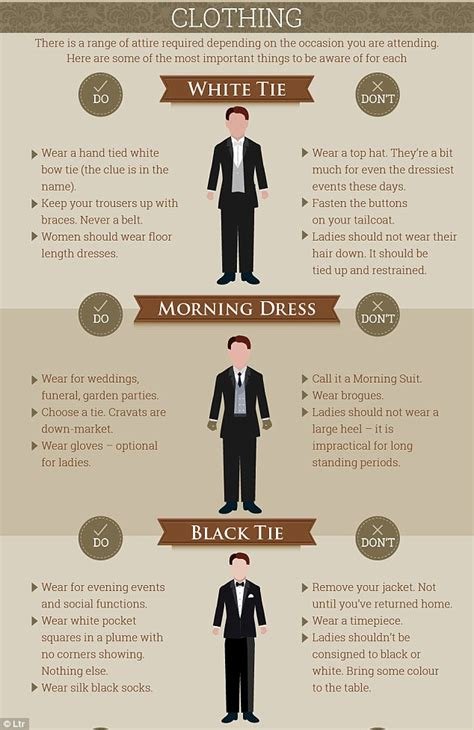Garden Design Tips for Pet-Friendly Backyards
As pet owners, we want our furry friends to be able to enjoy our outdoor spaces just as much as we do. However, designing a pet-friendly backyard can be a bit challenging, as we need to consider their safety, comfort, and the impact they may have on our garden. In this blog post, we will explore some essential garden design tips for creating a backyard that is enjoyable for both you and your pets. From choosing pet-friendly plants to implementing water safety measures, we will cover a range of topics to help you create a safe and welcoming outdoor environment for your beloved pets. Whether you have a dog, cat, or even a pet pig, these tips will help you design a backyard that meets both your needs and those of your furry companions. Let’s explore how to design a pet-friendly backyard that will be the envy of all your pet-owning friends!
Choosing Pet-Friendly Plants
When it comes to creating a safe and welcoming outdoor environment for your pets, one important factor to consider is the type of plants you have in your yard or garden. Choosing pet-friendly plants is essential to ensure the well-being of your furry friends and prevent any potential harm from toxic or harmful varieties.
First and foremost, it’s crucial to do your research and familiarize yourself with the types of plants that are safe for pets. Look for pet-friendly options such as marigolds, sunflowers, and roses, which are non-toxic to dogs and cats. Avoid plants such as lilies, tulips, and azaleas, which can be harmful if ingested by pets.
Another important consideration when choosing pet-friendly plants is to take into account any potential allergies your pets may have. Just like humans, pets can have allergic reactions to certain types of plants, so it’s essential to be mindful of this when selecting varieties for your outdoor space.
Lastly, consider the landscaping and layout of your outdoor area when selecting pet-friendly plants. Choose plants that are sturdy and can withstand the playful nature of pets, as well as ones that won’t easily be trampled or destroyed. By selecting the right plants, you can create a beautiful and safe outdoor space for both you and your pets to enjoy.
Creating a Secure Enclosure
When it comes to creating a secure enclosure for your pets, it’s important to consider all aspects of their safety and well-being.
One of the first steps in creating a secure enclosure is to choose the right type of fencing. Look for fencing that is sturdy and tall enough to prevent your pet from jumping over or digging under.
Additionally, it’s crucial to inspect the enclosure regularly to ensure there are no weak spots or areas where your pet could potentially escape. This could include checking for loose boards, gaps, or areas where the fencing may be damaged.
Finally, it’s important to create a secure entrance and exit point for the enclosure. This could involve installing a gate with a secure lock to prevent unauthorized access and ensure your pet remains safely contained.
Designing Safe Pathways
When designing safe pathways for your pet-friendly landscape, it is important to consider materials that provide good traction and are gentle on your pet’s paws. Avoid using slick surfaces such as polished stone or tile, as these can be hazardous when wet and may cause your pet to slip and injure themselves. Opt for materials such as gravel, mulch, or textured concrete to provide a stable walking surface for both you and your furry friend.
Another important aspect of designing safe pathways is to ensure adequate lighting. Proper illumination along your pathways will allow you and your pet to navigate safely, especially during the evening hours. This can be achieved through the use of low-voltage landscape lighting, solar-powered lights, or motion-activated fixtures. Adequate lighting will not only enhance safety but also create a welcoming atmosphere for evening strolls with your pet.
Incorporating gentle curves and gradual slopes into your pathways is also crucial for ensuring safety. Avoid sharp turns and steep inclines, as these can be challenging for pets to navigate and may lead to accidents or injuries. By designing pathways with gentle curves and slopes, you can create a more natural and inviting flow that is both functional and safe for your pet to enjoy.
Finally, be mindful of surrounding landscaping elements when designing safe pathways. Avoid placing pathways too close to potentially hazardous areas such as thorny bushes, toxic plants, or bodies of water. Instead, consider incorporating pet-friendly plants and natural barriers to create a visually appealing and secure environment for your pet to explore.
Protecting Sensitive Areas
When designing your outdoor space to be pet-friendly, it’s important to consider the sensitive areas of your garden or yard. These areas may include delicate plants, flower beds, or areas with potential hazards for pets.
One way to protect these sensitive areas is by creating barriers or boundaries to keep pets away. This could involve using fencing, decorative rocks, or low barriers to prevent your pets from trampling or digging up these areas.
Another method for protecting sensitive areas is by providing alternative spaces for your pets to play and explore. By creating designated play areas or installing pet-friendly features such as agility courses, you can redirect your pets’ attention away from the sensitive areas of your outdoor space.
It’s also important to carefully choose the plants and landscaping materials in sensitive areas. Consider using pet-friendly plants that are not toxic to animals and are less likely to be damaged by pets. Additionally, using mulch or ground cover in sensitive areas can help protect the soil and plants from pet-related damage.
Providing Shaded Retreats
When it comes to creating a comfortable and safe environment for our pets, providing shaded retreats is essential. Pets need a place to escape from the sun and relax in a cool, shaded area. Whether it’s a covered porch, a gazebo, or strategically placed trees, it’s important to ensure that your pets have access to shaded areas throughout your outdoor space.
Creating shaded retreats can also help protect your pets from the dangers of overheating and sunburn. Just like humans, pets can suffer from heatstroke and sun damage, so having designated shaded areas where they can cool off is crucial for their well-being.
One way to provide shaded retreats for your pets is by incorporating pet-friendly plants and trees into your landscaping. Not only do these plants provide shade, but they also add beauty and natural appeal to your outdoor space. Consider planting trees such as dogwoods, maple, or birch, which offer ample shade and are safe for pets.
In addition to natural shade, you can also create shaded retreats with the use of outdoor shelters and structures. Whether it’s a cozy pet house, a covered deck, or a backyard gazebo, these structures offer pets a place to escape the heat and relax comfortably.
Managing Lawn Maintenance
When it comes to managing lawn maintenance, there are several important factors to consider in order to keep your yard looking its best while also keeping your pets safe. One of the most important things to consider is the type of grass you have in your yard. Some grasses are better suited for pets than others, so it’s important to choose a variety that can withstand heavy pet traffic and play. Additionally, regular mowing and edging are essential for maintaining a healthy lawn and reducing the risk of injuries to your pets.
Another important aspect of managing lawn maintenance is fertilization and weed control. Using pet-friendly fertilizers and natural weed control methods, such as pulling weeds by hand or using organic herbicides, can help keep your yard safe for your pets. It’s also important to regularly water your lawn to keep it healthy and green, but be mindful of the types of irrigation systems you use to ensure they are safe for pets.
Furthermore, keeping your yard free of debris and potential hazards is essential for pet safety. Regularly removing sticks, rocks, and other objects from your lawn can reduce the risk of injuries to your pets. Finally, it’s important to monitor your pets’ behavior in the yard to identify any areas that may need special attention or maintenance. By following these tips for managing lawn maintenance, you can create a safe and enjoyable outdoor space for both you and your pets.
Overall, managing lawn maintenance is essential for creating a safe and enjoyable outdoor space for your pets. By considering factors such as grass type, mowing and edging, fertilization and weed control, irrigation, hazard removal, and pet behavior, you can ensure that your yard is a pet-friendly environment. With the right maintenance techniques, you can have a beautiful lawn that is also safe for your furry friends to enjoy.
Implementing Water Safety Measures
When it comes to ensuring the safety of our pets, it’s important to consider all potential hazards in and around our homes. Water safety is a crucial aspect that should not be overlooked. Whether you have a pool, pond, or any other body of water on your property, implementing water safety measures is essential to protect your pets from potential accidents.
One of the first steps in implementing water safety measures is to install a secure barrier around any water features. This can include a fence around a pool or a sturdy cover over a pond. Restricting access to these areas can prevent pets from accidentally falling in and getting into danger.
In addition to physical barriers, it’s important to also provide an easy exit for pets that may accidentally find themselves in the water. This can be achieved by adding ramps or steps for them to safely climb out. These simple measures can potentially save a pet’s life in the event of an accident.
Lastly, it’s crucial for pet owners to be vigilant and supervise their pets around water at all times. No safety measure can replace the watchful eye of a responsible pet owner. By being aware of the potential risks and taking proactive steps to prevent accidents, pet owners can create a safe environment for their beloved animals.
Adding Pet-Friendly Features
When designing your outdoor space, it’s important to consider the needs of your furry friends. Adding pet-friendly features to your yard not only benefits your animals, but can also enhance the overall enjoyment of your outdoor space.
One way to accommodate your pets is by creating designated areas for them to play and relax. Installing a fenced-in section of your yard can give your pets a safe space to roam and explore without the risk of escaping. This can also give you peace of mind knowing that your pets are secure while enjoying the outdoors.
Another pet-friendly feature to consider is incorporating pet-friendly plants and landscaping. Opt for non-toxic plants and mulch to keep your pets safe from potential hazards in your yard. Additionally, providing shaded areas and water stations can help keep your pets cool and hydrated during hot weather.
Lastly, don’t forget to consider the comfort of your pets when adding outdoor furniture. Look for durable, pet-friendly materials that are easy to clean and resistant to wear and tear. This can make your outdoor space more inviting for both you and your furry companions.
Utilizing Natural Pest Control Methods
When it comes to maintaining a pest-free environment for your pets, it’s essential to utilize natural pest control methods in and around your home. Chemical pesticides can be harmful to your furry friends, so it’s important to explore alternative options for keeping pesky insects at bay. One natural pest control method that is highly effective is diatomaceous earth, which is a fine powder made from the fossilized remains of aquatic diatoms. This substance can be sprinkled around the perimeter of your property to deter ants, fleas, and other unwanted bugs.
Another natural pest control method to consider is neem oil, which is derived from the seeds of the neem tree. Neem oil has insecticidal properties and can be used to repel and eliminate pests such as mosquitoes, ticks, and fleas. It can be applied to outdoor areas where your pets spend time, as well as on pet bedding and other surfaces to combat infestations.
Citrus peels are another effective natural pest control method that can be used in your home. The strong scent of citrus deters ants, roaches, and spiders, making it a pet-friendly option for keeping your living spaces bug-free. Simply place citrus peels near potential entry points for insects, such as windows and doors, to discourage them from invading your home.
Lastly, companion planting is a natural pest control method that can help prevent insect damage to your outdoor garden or landscaping. By strategically planting pest-repelling plants alongside your desired vegetation, you can create a natural barrier against pests. For example, planting marigolds alongside your vegetable garden can deter unwanted insects and protect your produce without the use of harmful chemicals.
Considering Multi-Functional Spaces
Considering Multi-Functional Spaces
When designing a pet-friendly outdoor space, it’s important to consider creating multi-functional areas. These spaces should serve the needs of both your pets and your family, providing a balance of practicality and aesthetics. By incorporating multi-functional areas, you can ensure that the outdoor space is enjoyable for everyone.
One way to achieve multi-functionality is by designing versatile seating areas that can also double as play spaces for your pets. For example, incorporating benches or low walls that can be used for seating, but also act as obstacles for pets to play around can be a great addition. This ensures that the space can be used for relaxation and recreation, catering to both humans and animals.
In addition to seating areas, it’s important to think about how different zones within the outdoor space can serve multiple purposes. For instance, a section of the garden could incorporate raised beds for gardening enthusiasts, while also including a designated play area for pets. This allows individuals to pursue their interests while also providing a safe and engaging environment for their pets to roam and play.
By considering multi-functional spaces in your outdoor design, you can create a harmonious and inclusive environment that meets the needs of both pet owners and their beloved animals. This approach ensures that the outdoor space is utilized to its full potential, enhancing the overall experience for everyone involved.
Frequently Asked Questions
What are some tips for choosing pet-friendly plants in a backyard garden?
When selecting plants for a pet-friendly backyard, it’s important to choose non-toxic options such as sunflowers, petunias, and marigolds. It’s also a good idea to avoid plants like lilies and azaleas, which can be harmful to pets if ingested.
How can I create a secure enclosure in my backyard for my pets?
To create a secure enclosure, consider using fencing or barriers that are tall enough to prevent pets from jumping over. Check for any gaps or holes that pets could escape through, and make sure gates are securely latched.
What are some ways to provide shaded retreats for pets in the backyard?
You can provide shaded areas for pets by strategically placing trees or installing a pergola or canopy. You can also create shaded retreats with pet-friendly ground covers and plantings that provide natural shade.
What are some natural pest control methods that are safe for pets?
Some natural pest control methods that are safe for pets include using beneficial insects, such as ladybugs and praying mantises, to control pests. You can also use companion planting to repel pests, such as planting marigolds to deter nematodes.
How can I implement water safety measures in my backyard for my pets?
To ensure water safety for pets, consider installing a shallow, non-slip water feature or pond with gradual slopes for easy entry and exit. It’s also important to provide access to fresh drinking water and supervise pets around pools or other bodies of water.
What are some pet-friendly features that can be added to a backyard garden?
Pet-friendly features to consider adding to a backyard garden include a designated play area with pet-safe toys and agility equipment, a digging pit for dogs, and a pet-friendly fountain or water feature for pets to splash in.
How can I design safe pathways in my backyard for my pets?
When designing pathways, use pet-safe materials like gravel, mulch, or rubber pavers that are gentle on pets’ paws. Be mindful of any potential hazards along the path, such as sharp edges or thorny plants.






